The things we do in the name of science (part one)
Welcome, one and all, to the re-debut of Infusions of Grandeur! It's great to finally be back. We've got a lot of great things planned for the blog, but we wanted to start back off with something big. We decided that, since we're expanding our horizons a bit, we should see how well one of our time-honored methods will translate to other subjects.
As our long-time readers know, all of the vodka infusions we make are based on bottom-shelf rotgut vodka that has been filtered five times through a water filter to make it drinkable. The process won't turn Vladimir into Grey Goose, but it does remove most of the impurities that make it wretched, transforming it into a decent mid-grade. If you are skeptical, you can read our original debut for a side-by-side comparison; or, for some of the technical details, read our study on vodka filtration.
But the question we intend to answer today is, how does this process work with liquors other than vodka? Bottom-shelf run, whiskey and other liquors have the same problem with impurities as bad vodka. However, they also have flavorings that are not present in vodka, the simplest of all liquors. Will these essential compounds survive the filtration? There is only one way to find out for certain.
In this experiment, we will test the filtration of five different liquors: gin, light rum, gold rum, whiskey, and tequila.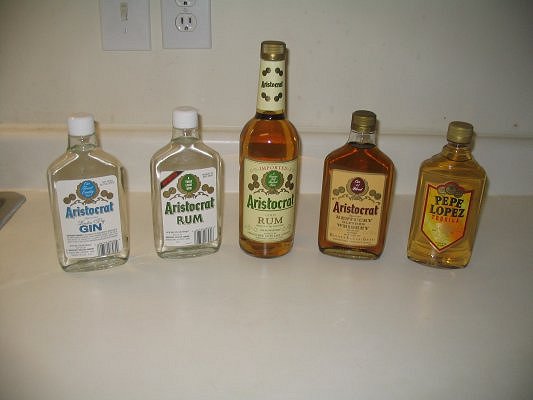
Aristocrat was chosen for most of them because it's a fairly standard low-grade that most people are familiar with (at least, in our region). Pepe Lopez tequila was chosen for sentimental reasons, which will be explained in part two of this post.
Before filtering each liquor, a small amount was set aside to serve as a control. The testing of each liquor consisted of three samples: first, the original, unfiltered liquor; second, a middle-shelf equivalent (see below); and finally, the filtered liquor, to see how it compares to both.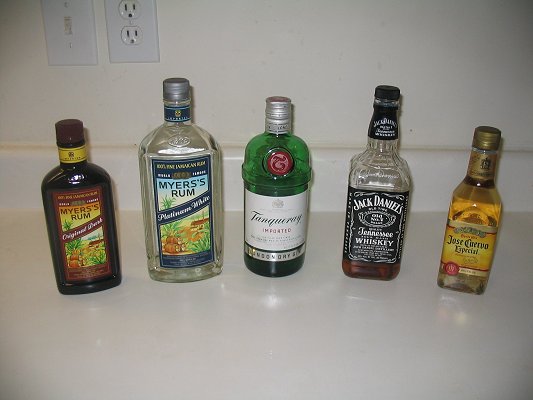
Before we begin, there are a few caveats that we should discuss. First of all, the same filter was used throughout this experiment, which could taint the later portions. We attempted to reduce this risk in several ways. We are using a brand new filter, and ran plain tap water through it between each liquor to rinse it. We also used less of each liquor than our usual 750 mL bottle; as a rough estimate, we used about 300 mL of each. (We bought 375 mL bottles when possible, and set some of that aside for the control; no one seems to sell gold rum in 375 mL bottles, so we bought a fifth and used only a portion of it.)
Second, I'm sure that Scottes will point out that the Myers's Rum we're using as a comparison to the Aristocrat Gold is a dark, not a gold rum. We didn't realize this until after we had completed an $80 liquor run, so we decided to leave it in place with this disclaimer. (The irony is not lost on us that, though we are evaluating a way for frugal drinkers to save money, this is our most expensive experiment ever.)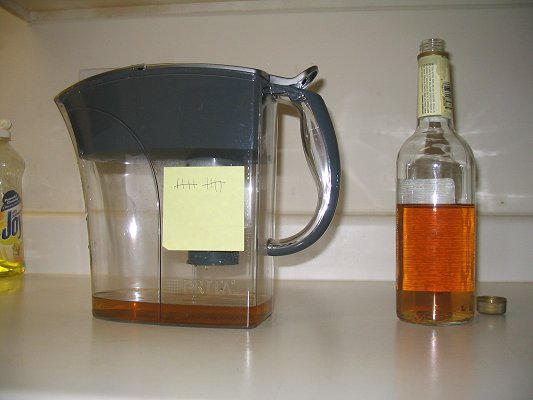
We filtered the liquors in order of color, starting with the clear liquors. We began with gin, then moved on to light rum, gold rum, tequila, and finally whiskey. The first test of this experiment would be color of the liquors: if there was a loss in color due to the filtration, this would not bode well for the process.
The gin and light rum went through first; there was, of course, no change in their color. When we began filtering the darker liquors, we began to observe their color closely. After five passes through the filter, the gold rum experienced a fairly obvious loss in color. Here you see the filtered rum on the left, and unfiltered on the right.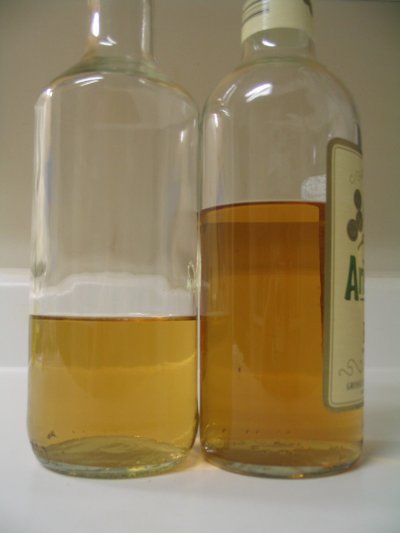
The tequila came next. Pepe Lopez has a fairly light color to begin with; by our rule, we should have filtered it before the gold rum in the first place. As such, the color change was subtle, but it definitely occurred.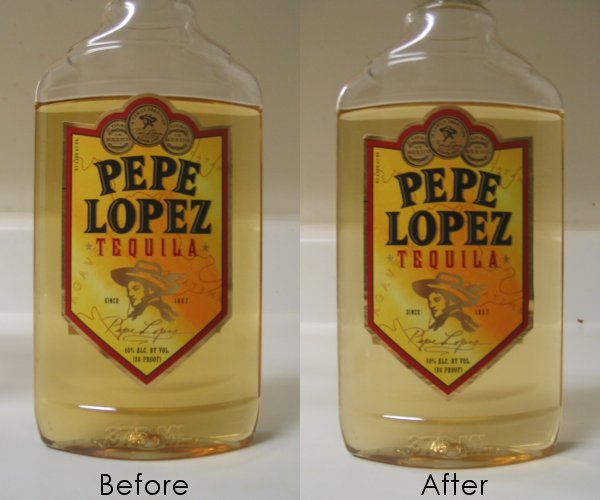
The change in color is more apparent when you compare them more closely. Here's a cropped section of each photo; the filtered tequila is on the right.
The Aristocrat whiskey, though much darker than the tequila, experienced a similarly subtle change in color.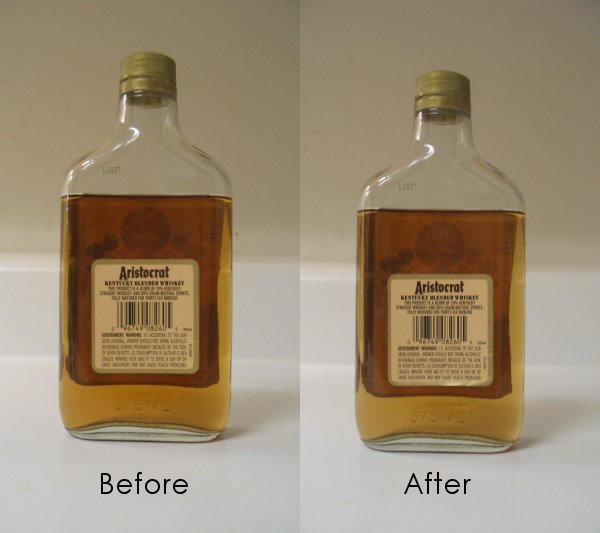

Do these changes in color represent a similar reduction in taste? With such bad liquors, would that really be a bad thing? Does a small loss of color mean a similarly subtle drop in taste, or is it evidence of a greater change? We will return on Wednesday with the tastings and results!

